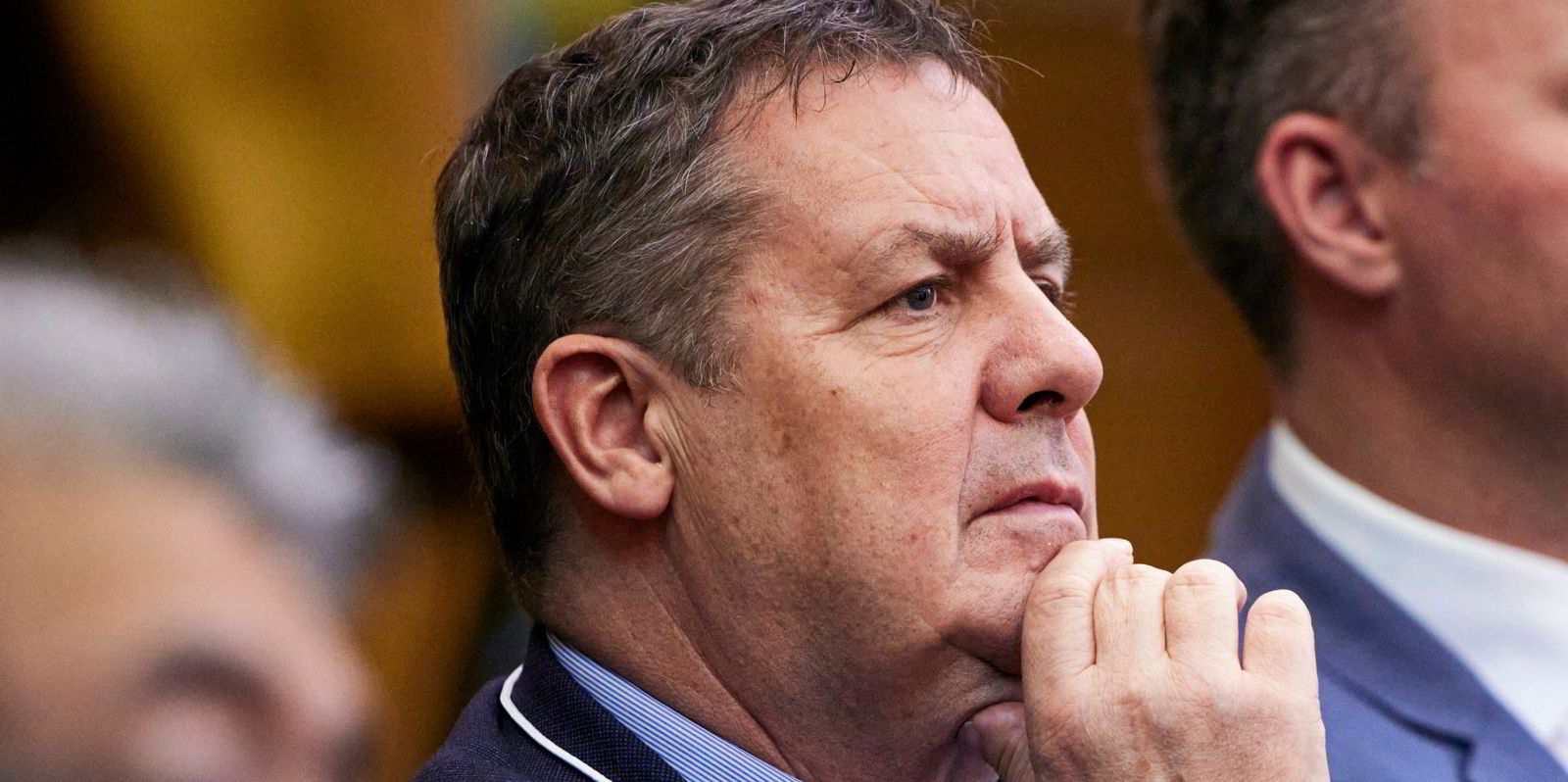After deliberations over shipping’s decarbonisation shifted from the COP27 climate conference in Egypt to Brussels, where European Union officials agreed to put a price on the industry’s greenhouse gas emissions for the first time, the next stop is the International Maritime Organization in London.
But will the IMO follow the EU’s lead in taxing carbon to push shipping more rapidly toward decarbonisation?
Shipping stakeholders will be listening for hints to the answer to that question as the United Nations body’s Marine Environment Protection Committee meets next week, as well as a working group meeting already taking place ahead of the main event.

Under the recent EU deal, shipping will be phased into the bloc’s emissions trading starting in 2024, with full roll-out in 2026.
The IMO has been mulling a basket of mid-term measures that would include carbon pricing, either in the form of a cap and trade scheme that would resemble the EU Emissions Trading System, or a levy that would be a more straightforward tax on greenhouse gas.
A variety of proposals are on the table. The Marshall Islands and Solomon Islands, archipelago nations facing disproportionate impacts from climate change, want a carbon levy calling for $100 per tonne of CO2 equivalent emissions starting in 2025.
That price, which equates to more than $300 per tonne of conventional bunker fuel, would ratchet in five-year reviews.
The International Chamber of Shipping, which is made up of shipowners’ groups around the world, also wants a flat-rate levy system.
Reward scheme
As TradeWinds reported in October, the group has said it favours a reward scheme aimed at incentivising development of low-carbon and zero-carbon fuels.
The ICS believes the measure, which it said could be adopted in 2024, would allow setting a levy that would avoid market distortions that disproportionately hit some states.

Japan is pushing a proposed Zero-Emission Shipping Incentive Scheme, which would similarly have a per-tonne price for carbon and rewards for zero-carbon fuels. But it puts a focus on using revenue for assisting developing states, a response to calls from poorer nations that they should not be left behind in shipping’s transition.
Norway has reiterated its support for a cap-and-trade system, which would also work alongside a fuel standard.
EU submission focuses on levy
The European Commission and EU countries have previously told the IMO that a cap-and-trade system could do more to decarbonise shipping by 2050 than a levy.
But in a submission ahead of the working group meeting, the European delegations focused on a levy. EU officials said that, when combined with fuel standards limiting carbon intensity, a levy could phase out greenhouse gas emissions from shipping, and the revenue could be used to support an equitable transition.
Any plan would have to take into account national or regional systems, such as the EU’s own recently approved system, and should be considered at a later stage to avoid “double counting” of emissions.

Lars Robert Pedersen, deputy secretary general of international shipping group Bimco, told TradeWinds that once the IMO adopts a carbon price mechanism, his organisation hopes the newly approved EU ETS will be adapted to it.
But he said the EU may consider its regulation a minimum standard, meaning it may stick to its guns if the IMO does not live up to it.
He said many in shipping prefer a levy-based system rather than emissions trading, as it is easier to understand and administer.
After all, the recently approved EU ETS builds on the existence of a pre-existing carbon market.
“To think that IMO can establish a global carbon market just for shipping — that may be over the top and too complicated,” Pedersen said.
As IMO discussions ramp up, environmental groups tracking the negotiations are hoping for progress across a number of fronts.
Lucy Gilliam, senior policy officer for shipping at Seas at Risk, said the focus needs to be on the urgency of bringing the IMO’s decarbonisation strategy in line with capping global warming at 1.5C and bringing significant emissions cuts by 2030.
Getting an agreement on carbon pricing, in addition to fuel standards, is key. But she said she is flexible about whether that is through a levy or a cap-and-trade system.
“At the end of the day, I want to see climate pollution priced,” she said, adding that generating funds to support climate vulnerable countries is also important.
______________
More on environmental sustainability and the business of the ocean
______________
IMO sets its sights firmly on zero-carbon emissions
Governments are meeting at the IMO in the hope of moving closer to a consensus on setting more ambitious decarbonisation targets for shipping, Adam Corbett writes.
The UN body needs to come closer to a decision if it is to meet its 2023 deadline of adjusting its long-term targets on reducing greenhouse gas emissions to match the decarbonisation targets of the Paris Agreement on climate change.
Ahead of next week’s Marine Environment Protection Committee, the commitment to achieving zero-carbon emissions by 2050 from influential IMO members such as the European Union, Japan, the UK and the US is as strong as ever — and seems the most likely outcome.
But there is a debate to be had over whether the target should be zero greenhouse gas emissions, or net zero.
______________
Global shipping groups see EU emissions deal as ‘OK’ compromise

Global shipowners’ groups issued a lukewarm response to a deal among European Union institutions to require shipping to pay for their carbon under the bloc’s emissions trading rules.
They expressed hope that the move will help translate into global action at the IMO, and that the EU’s new rules will be adapted to a carbon pricing mechanism ultimately adopted by the UN shipping regulator.
Guy Platten, secretary general of the International Chamber of Shipping, described the EU developments as “interesting” but reiterated the group’s preference for an IMO-driven path to decarbonisation.
He said the ICS, whose membership is made up of shipowners’ associations from around the world, hopes that the momentum at the EU will be harnessed at this month’s meeting of the IMO’s Marine Environment Protection Committee.
“To solve the global climate crisis, global solutions are needed,” Platten told TradeWinds.
______________
Liquefied hydrogen ‘will have no role anywhere in energy and transport’
Liquid hydrogen has no place in transport or energy applications, influential energy analyst Michael Liebreich told his 54,000 Twitter followers.
Recharge’s Rachel Parkes reports that in a colourful, exclamation mark-laden tweet, Liebreich said attempts to replicate the success of LNG are futile.
Targeted at “those who think we’re going to be importing hydrogen over vast distances”, the viral thread also took aim at ammonia and liquid organic hydrogen carriers, which have also been highlighted by hydrogen proponents as potential transport solutions for the fuel.




